Blog & Latest Updates
Fly Fishing Articles
Insects by Common Name


Troutnut.com User Streamcaddi (Dave)
| Real Name | Dave |
| Location | West Michigan |
| Homepage | none |
Send Streamcaddi a Private Message
To do this you have to log in at the top of the page. If you haven't registered yet, it's this easy:Latest Posts By Streamcaddi
| Title | Replies | Last Reply |
| Re: What is the big DEAL about the HEX? In the Mayfly Species Hexagenia limbata by Spinner | 21 | Sep 5, 2009 by Bombillo |
| Re: Elk Hair Caddis In Fly Tying by Dryfly | 6 | Sep 4, 2009 by Strmanglr |
| Re: fly pattern In Fly Tying by Lastchance | 3 | Jun 26, 2008 by Softhackle |
Streamcaddi's Favorite Troutnut.com Pictures
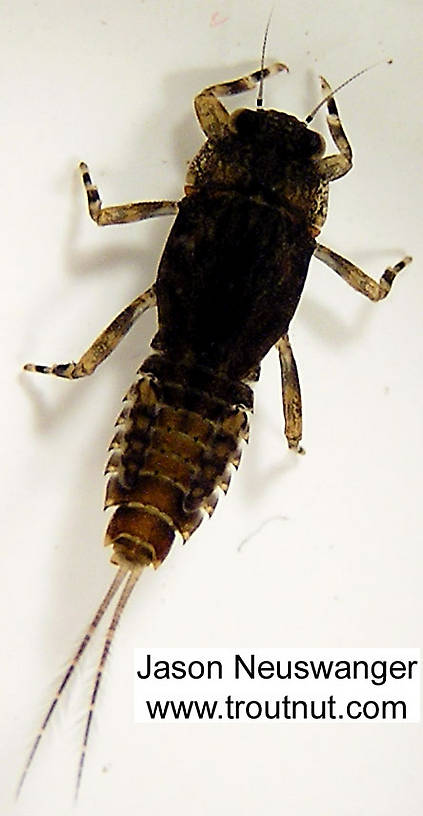
AuthorTroutnut
CameraOlympus C740UZ
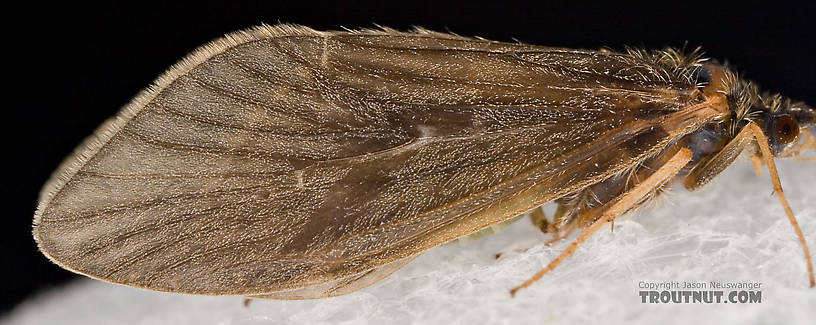
Brachycentrus appalachia (Apple Caddis) Caddisfly Adult from the West Branch of the Delaware River in New York
AuthorTroutnut
CameraCanon EOS 20D
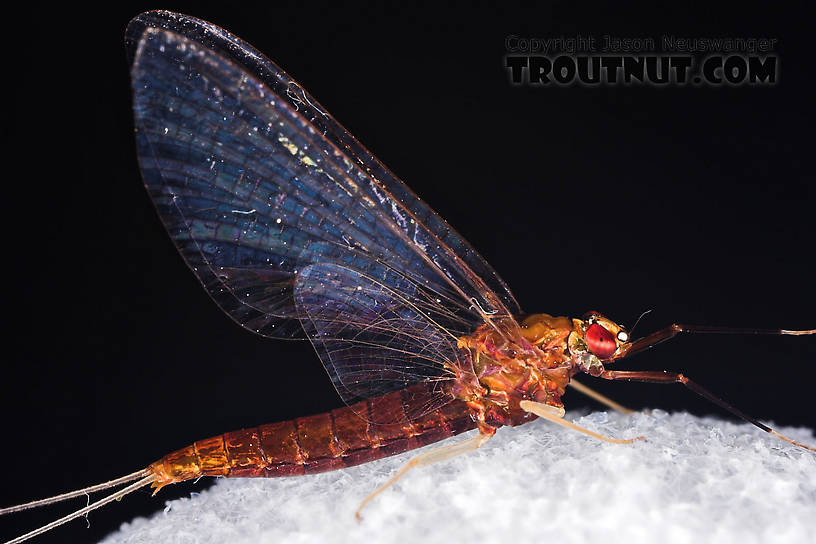
Female Isonychia bicolor (Mahogany Dun) Mayfly Spinner from the West Branch of Owego Creek in New York
AuthorTroutnut
CameraCanon EOS 20D
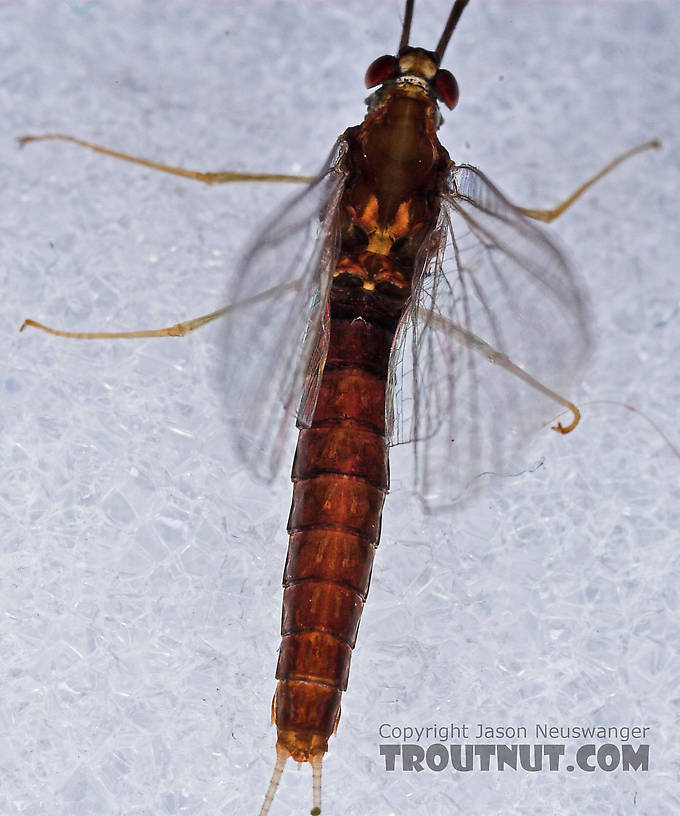
Female Isonychia bicolor (Mahogany Dun) Mayfly Spinner from the West Branch of Owego Creek in New York
AuthorTroutnut
CameraCanon EOS 20D
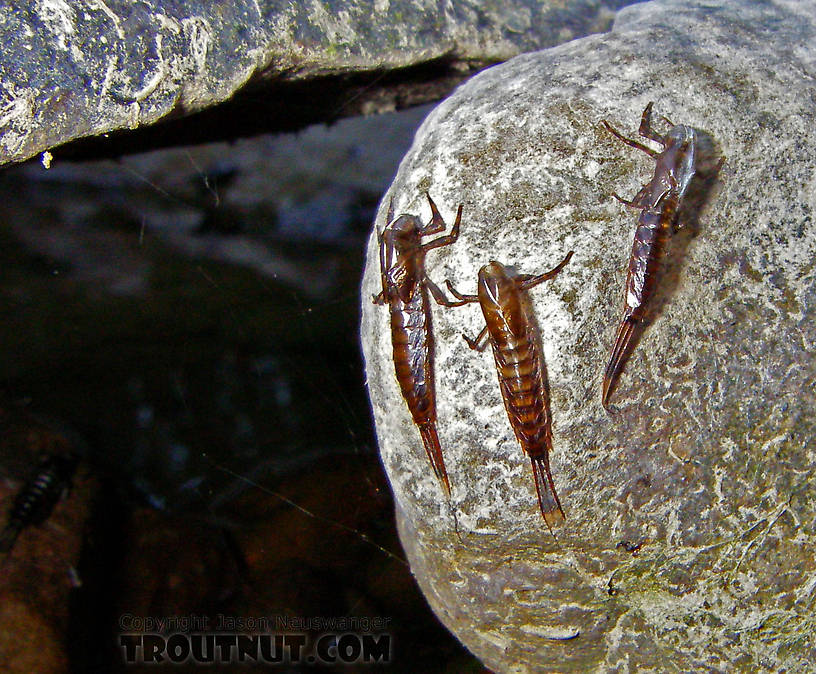
Closeup of some recently emerged Isonychia bicolor nymphs from a small stream.
StateNew York
LocationWest Branch of Owego Creek
Date TakenAug 9, 2006
Date AddedAug 10, 2006
AuthorTroutnut
CameraPENTAX Optio WPi
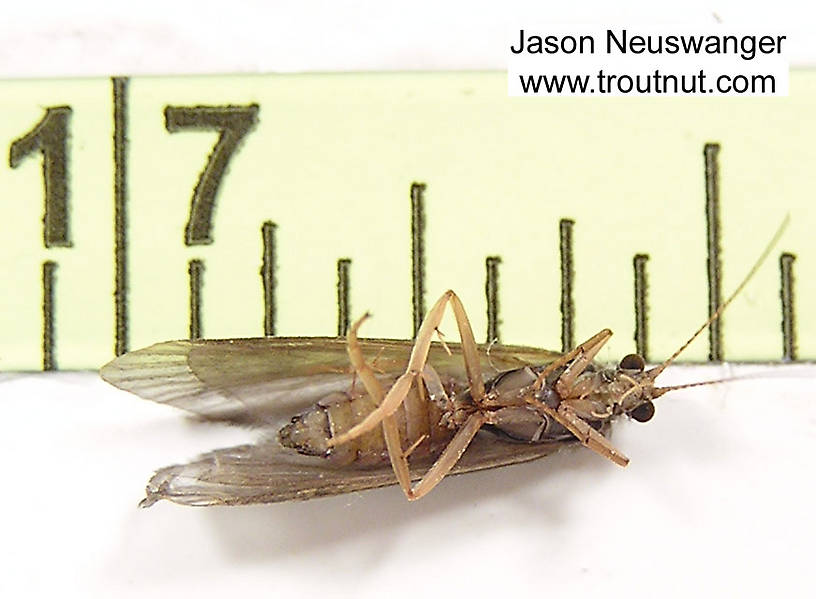
AuthorTroutnut
CameraOlympus C740UZ

AuthorTroutnut
CameraOlympus C740UZ
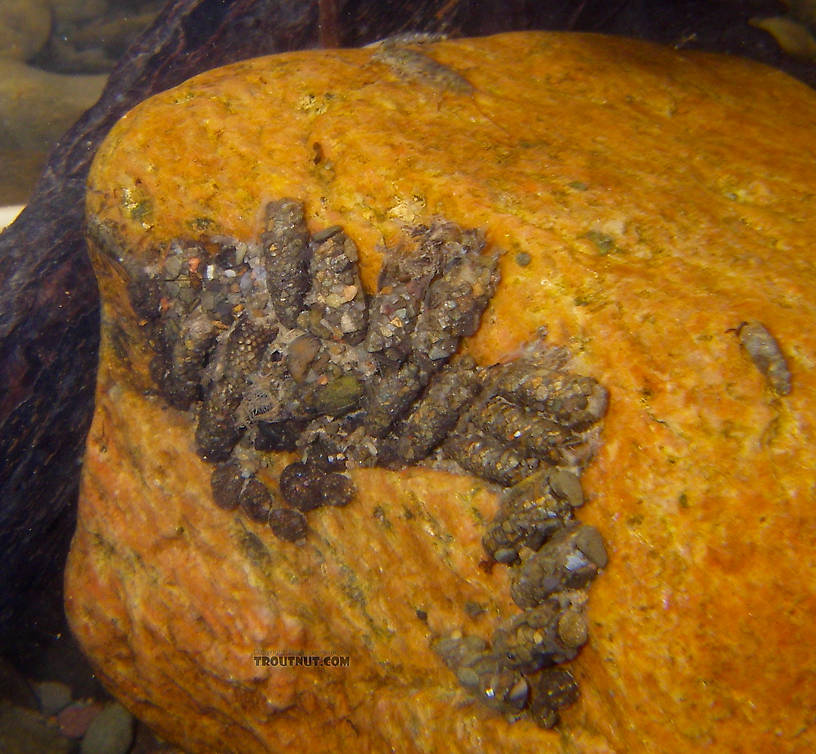
A variety of cased caddisfly larvae, probably mostly Neophylax, have clustered along the backside of a rock in fast water. There seem to be some Helicopsychidae larvae clustered along the bottom, and a few other taxa are mixed in. It's interesting that several larvae have especially large stones placed over the front openings of their cases, perhaps to block the case off for pupation.
It does seem to be the wrong time of year for Neophylax to be pupating, but that was the ID given for one of these which I collected and photographed up close.
In this picture: Caddisfly Genus Helicopsyche (Speckled Peters) and Caddisfly Genus Neophylax (Autumn Mottled Sedges).
It does seem to be the wrong time of year for Neophylax to be pupating, but that was the ID given for one of these which I collected and photographed up close.
In this picture: Caddisfly Genus Helicopsyche (Speckled Peters) and Caddisfly Genus Neophylax (Autumn Mottled Sedges).
StateNew York
LocationCayuta Creek
Date TakenApr 14, 2007
Date AddedMay 3, 2007
AuthorTroutnut
CameraPENTAX Optio WPi
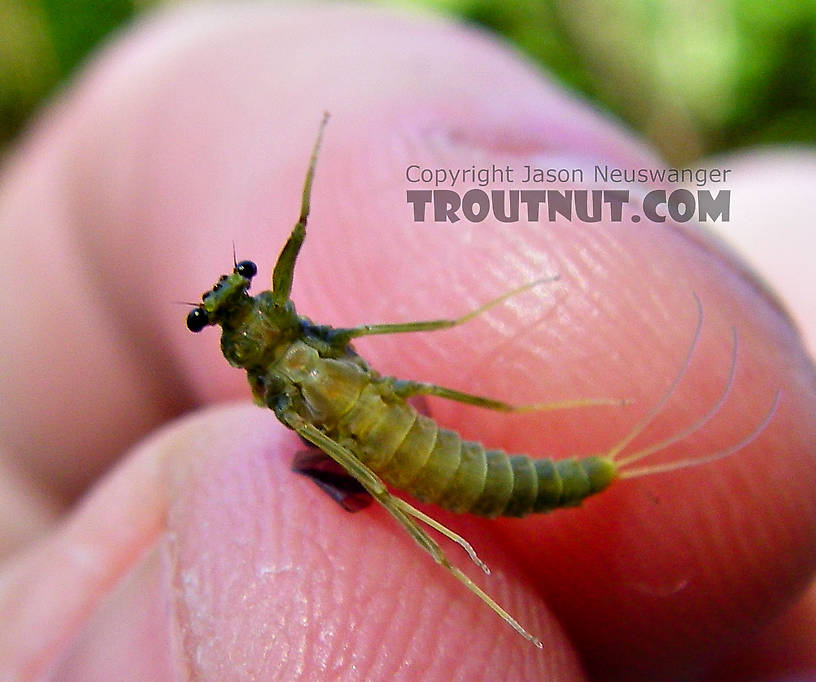
A freshly emerged female Drunella cornuta dun.
StatePennsylvania
LocationBrodhead Creek
Date TakenMay 29, 2007
Date AddedJun 5, 2007
AuthorTroutnut
CameraPENTAX Optio WPi
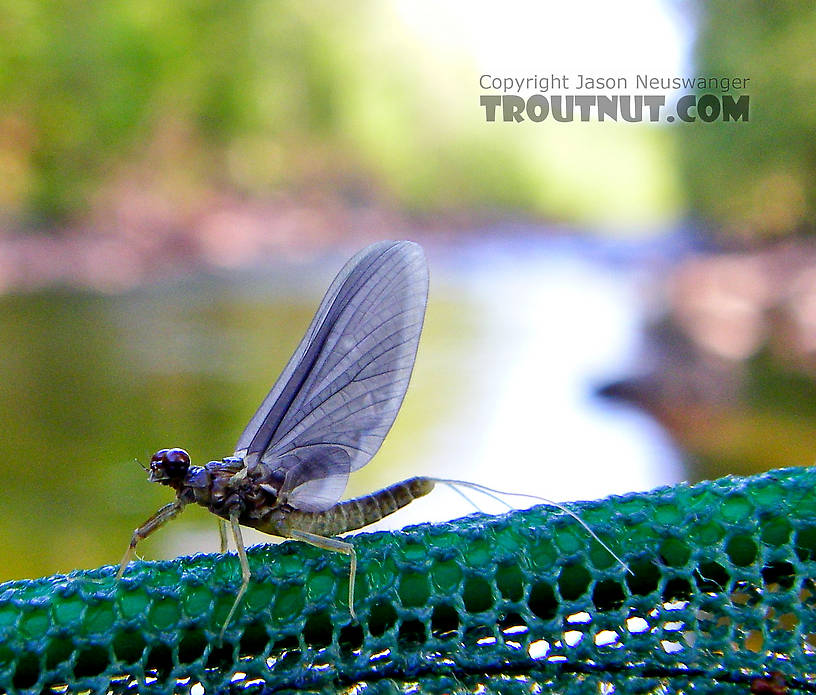
StatePennsylvania
LocationBrodhead Creek
Date TakenMay 29, 2007
Date AddedJun 5, 2007
AuthorTroutnut
CameraPENTAX Optio WPi
Troutnut.com is copyright © 2004-2024 Jason
Neuswanger (email Jason). See my FAQ for information about use of my images.
 privacy policy
privacy policy
